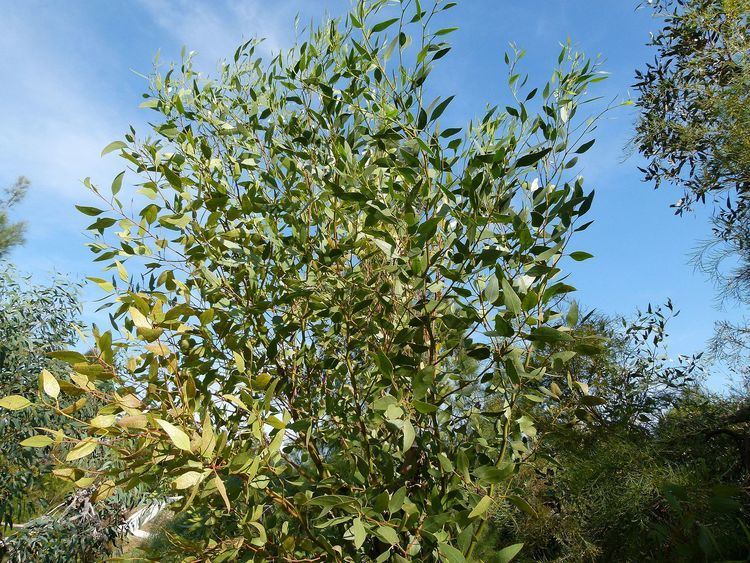Rank Species | ||
 | ||
Similar Eucalyptus dumosa, Eucalyptus gracilis, Eucalyptus oleosa, Eucalyptus socialis, Eucalyptus porosa | ||
Eucalyptus incrassata, commonly known as the lerp mallee, yellow mallee, ridge fruited mallee or rib fruited mallee, is a mallee that is native to southern Australia.
Contents
Description
The single stemmed or multi-stemmed mallee typically grows to a height of 2 to 5 metres (7 to 16 ft) but can reach as high as 10 metres (33 ft), it usually will grow to a width of 4 to 7 m (13 to 23 ft). It has rough bark on the truck that becomes smooth on the branches. The bark is smooth with a grey or grey-brown colour, it sheds in strips to reveal a paler layer beneath. The adult leaves are alternate, glossy, thick and palish-green in colour. The leaves are usually 150 millimetres (5.9 in) in length and 30 mm (1.2 in) wide and have a lanceolate shape. Leaves are aromatic when crushed. It blooms between August and April producing cream-white-yellow blossoms. The flowers appear in groups of 3 to 7 in the axils of the leaves. Buds form later that are 23 mm (0.9 in) long and 11 mm (0.43 in) wide. The buds are ellipsoid or narrowly obovoid to urn-shaped and are on stalks up to 7 mm (0.28 in) long.
Distribution
It is often found along sandplains and hillsides and is distributed from the Mid West, through the Wheatbelt and along the south coast in the Great Southern and Goldfields-Esperance regions of Western Australia where it grows in sandy soils. It is also found in the south of South Australia extending into Victoria and New South Wales. Attracts nectar eating birds and insects for food and habitat.
Classification
The species was first formally described by the botanist Jacques Labillardière in 1806 in the work Novae Hollandiae Plantarum Specimen. There are many synonyms for the species including Eucalyptus costata as described by Ferdinand von Mueller in 1855 and Eucalyptus decens as described by Kenneth Hill. The name Incrassata is from the Latin 'incrassatus' meaning thickened referring to the plants thick leaves.
Cultivation
E. incrassata is used as a shade tree, mass planting will offer good screening, good for ersion control or as a windbreak. It is suitable mediterranean and bush style gardens and responds well to coppicing. It is tolerant of both drought and light frost. Able to grow in ordinary soil or enriched soil that is either acidic to alkaline and prefers a position in the full sun. Seeds will germinate in 2 to 6 weeks and it can be grown from cuttings. The tree is susceptible to powdery mildew in the wetter months of winter, it can also be affected by myrtle rust and by dieback.
